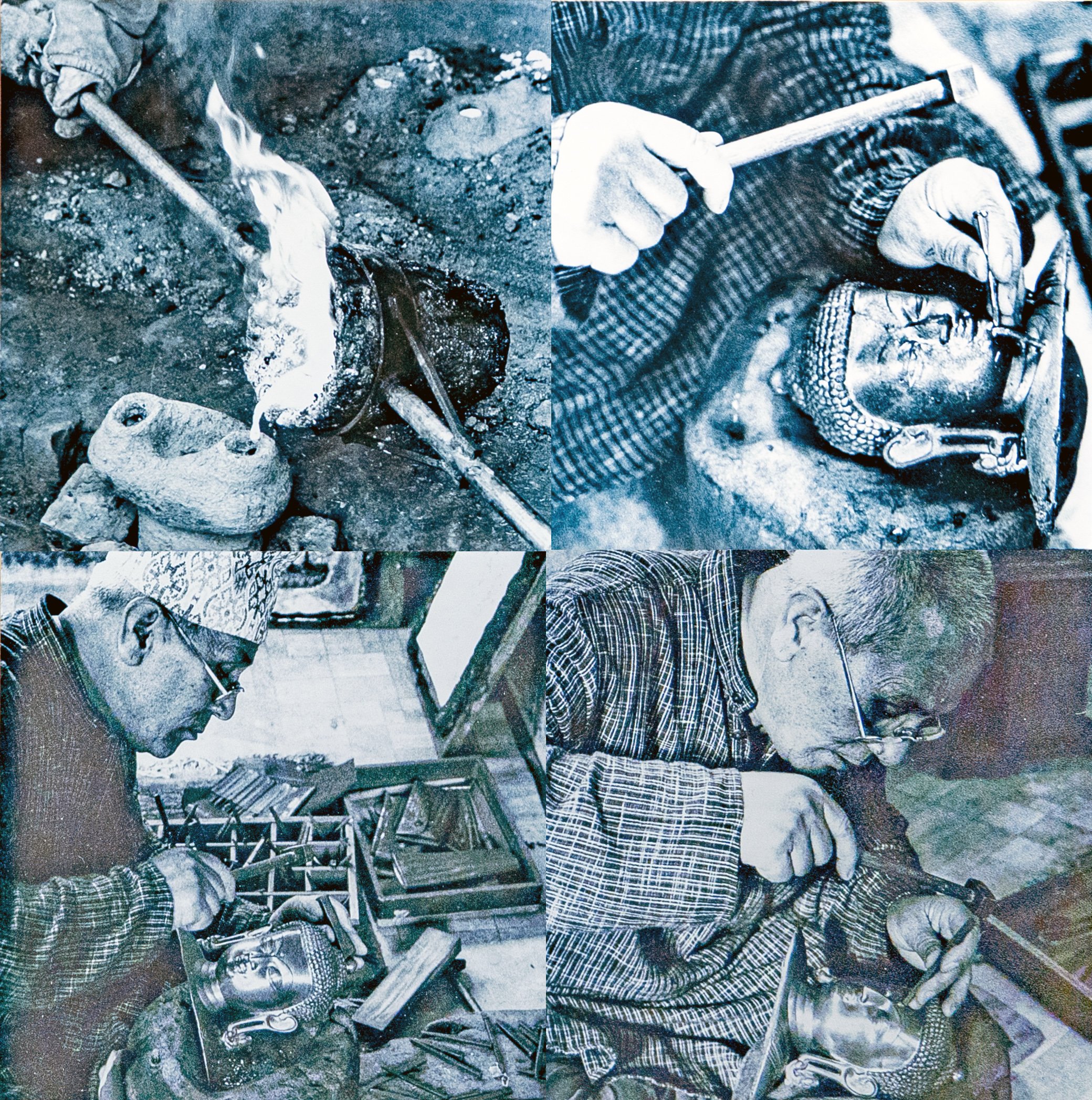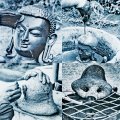Patan Museum (Nepal): photo 212
Photo 212 of 212 in Gallery: Patan Museum (Nepal)

Image title: The process of Gilding
Description of the photo
The empty molds and metal-laden crucibles are stacked in separate kilns and fired for several hours. With well-honed intuition the master assesses when they have reached the right temperatures. The heated molds are removed with 4 foot metal tongs and placed in position to receive the molten metal. With dramatic timing the master rapidly fills each mold with the exact quantity of molten metal needed while an assistant throws resin into it to prevent the metal from oxidizing as it cools. To complete the cooling, the metal-filled mold is immersed in water, then removed and broken open to reveal the image.
After a rudimentary cleaning the rough cast image, in this case of copper, is taken to another craftsman for finishing. With special scrapers he removes any residue of the blackened mold and soaks the image in sulfuric acid to complete the cleaning process. The excess metal of the pouring channels is removed with hammers, chisels, and dies. Then the entire surface is pounded with hammer and die in a cold forge process to condense and harden the metal. This process is generally done by an apprentice who has been taught the process by the master.
The smoothing of the surface is begun with files and sandpaper, usually by an apprentice (see the left side of the image). The master then uses various shaped dies and hammers of different weights to refine the details, as illustrated on the right side of the image. This process is called chasing. The finest tools are used to finish ornaments, such as the earrings, and to engrave delicate textile patterns like those on the folds of the robe over the left shoulder. If an image is to be gilded a goldsmith does it by a process called fire- or mercury gilding.
The process of gilding is a lengthy, complex, and dangerous one. Highly toxic mercury is first combined with ground gold foil to make it adhere to the metal but then driven off by heating to leave only the gold. By various processes the gilded surface is then burnished and polished to achieve a rich golden color. As an ultimate step it may be immersed in a red dye obtained from tree bark which produces a warm reddish glow, a finish particularly appreciated in Tibet
Gallery information:
The Patan Museum is located on the Durbar square of Patan (Lalitpur/Lalitapura, Kathmandu, Nepal) which is associated Keshav Narayan Chowk (Keshavnarayan)—a form of Lord Vishnu. Being listed as a World Heritage Site, the whole of Durbar square is filled with exquisite temples, sculptures and other ancient structures, of which the ancient history history can be traced to the Malla Kings of Lalitpur. It is an important site for both Buddhism and Hinduism.
Photo details:
High resolution:
Download file
Size: 2.97 MB
Resolution: 2080 x 2095
© Photograph by Gabe Hiemstra.
License: CC BY-NC-ND 4.0
